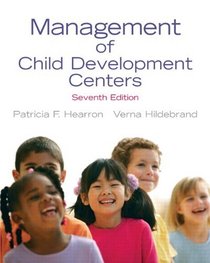Search -
Management of Child Development Centers (7th Edition)
Management of Child Development Centers - 7th Edition
Author:
Management of Child Development Centers, 7th Edition, addresses the importance of high-quality programs for young children and the support they provide to families. Managers of programs for young children must understand the value of family, as well as the relationships between family, program and community. — Part 1 of the text provides a... more »
Author:
Management of Child Development Centers, 7th Edition, addresses the importance of high-quality programs for young children and the support they provide to families. Managers of programs for young children must understand the value of family, as well as the relationships between family, program and community. — Part 1 of the text provides a... more »
ISBN-13: 9780137029440
ISBN-10: 0137029446
Publication Date: 3/27/2010
Pages: 432
Edition: 7
Rating: ?
ISBN-10: 0137029446
Publication Date: 3/27/2010
Pages: 432
Edition: 7
Rating: ?
0 stars, based on 0 rating




